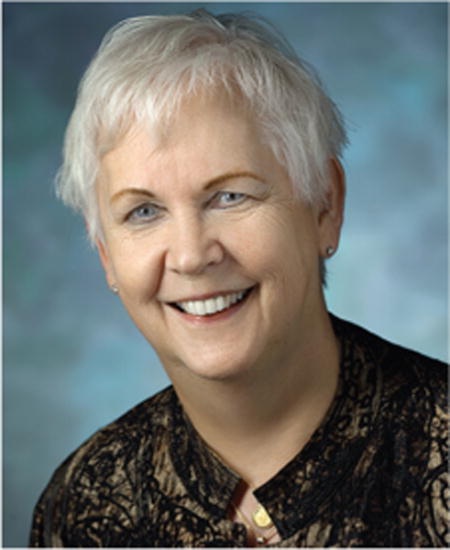As they have been in the past, pharmacists are ranked among the most trusted professionals, according to the results of an annual Gallup poll. These trusted healthcare professionals are easily accessible to most Americans, with nearly 60 000 community pharmacies in the US. Approximately 18% of these pharmacies have CLIA-waived status and can perform any of the approximately 120 CLIA-waived tests.
In addition, many pharmacists are now helping patients make drug dosage decisions in specialized Coumadin and diabetes clinics, among others. With healthcare dollars and physician time stretching thin, the easy access to pharmacists is an attractive way for many patients to receive medical care. But what does this mean for the clinical laboratory community? Do pharmacists receive the proper training to perform and interpret laboratory tests, and how do we ensure the quality of testing?
Here we talk to 4 experts, 2 pharmacists and 2 laboratorians, to discuss this rapidly changing space. Additionally, a list of suggested reading materials is provided in a Supplemental file that accompanies the online version of this article at http://www.clinchem.org/content/vol62/issue5.
What kinds of testing are pharmacists now involved with? Are they all CLIA waived or do they also order non–CLIA-waived tests?

Alex Adams: In a recent study, more than 10 800 pharmacies in the US were reported to hold a CLIA waiver. Thus, pharmacies are currently the fourth leading CLIA-waived facility in the country. Of these pharmacies, 99.85% held only a CLIA waiver, and thus very few pharmacies are currently providing non–CLIA-waived tests.
Interestingly, the number of CLIA waivers varies by pharmacy format. More than 43% of supermarkets with pharmacies hold a CLIA waiver; by contrast, only 24% of traditional chain pharmacies, 5% of independent pharmacies, and 4% of mass merchant pharmacies hold a CLIA waiver. Recent publications have documented the growth of CLIA-waived tests for infectious diseases in pharmacies, including those for influenza, group A Streptococcus, HIV, Heliobacter pylori, and hepatitis C virus (HCV).

Michael Klepser: The type of tests that pharmacists use and interpret varies. Pharmacists who practice primarily in the community setting are more likely to utilize CLIA-waived tests. Although more than 120 CLIA-waived analytes are available, more commonly used tests can be broken down into (a) those used to monitor status of chronic diseases or therapies and (b) those used to identify infectious pathogens. Examples of CLIA-waived tests used to monitor status of chronic diseases or therapies include INR (international normalized ratio), blood glucose, hemoglobin A1c, and lipid panels. In the realm of infectious diseases, use of tests for the detection of pathogens causing acute infections such as group A Streptococcus, influenza, respiratory syncytial virus, and Helicobacter pylori and chronic infections such as HIV, HCV, and syphilis have been employed by pharmacists.
Conversely, pharmacists working within hospitals and skilled care facilities are more likely to order non–CLIA-waived tests in the course of their clinical responsibilities. These tests, typically ordered under protocols, standing orders, or physician authorization, include tests to monitor renal and hepatic function, anticoagulation, infections, electrolytes, and drugs and are commonly used to assess the safety and efficacy of medication therapy in the institutionalized patient population. There is also a small but growing number of pharmacists who manage patients with conditions such as rheumatoid arthritis, psoriasis, HIV, and HCV in the community setting who are tasked with the comprehensive management of these complex patients. As a result, the pharmacists are frequently entrusted to order various non–CLIA-waived tests to gather the information needed to appropriately care for these patients.
What are the advantages/disadvantages to having pharmacists order and perform laboratory testing?

Charlotte A. Gaydos: Pharmacies are widely available to the public, with many open “24/7.” As such, they offer universal access to patients at convenient after-work hours. Patients desire more control and understanding of their own health. They want convenient access to diagnostic tests, especially for the diagnosis of sensitive conditions, such as sexually transmitted infections and HIV. They also want immediate and convenient access to the results of their diagnostic tests and immediate access to effective treatment. Pharmacy-based testing affords this kind of convenience.

Christopher Ball: The primary advantage is the convenience and timeliness of diagnosis for the patient. This may have a substantial impact as we enhance our focus on antimicrobial stewardship. Another potential advantage is the contribution of pharmacy test data to public health surveillance efforts. One prime example could be recruiting pharmacies to be “influenza-like illness” sites. The contribution of rapid influenza test results from pharmacies could greatly improve situational awareness during the influenza season. One of the primary disadvantages I can see in Idaho is that the physical layout of many pharmacies may be challenging for maintaining appropriate patient confidentiality during the exam and testing phases of patient interaction.
Michael Klepser: Although the Affordable Care Act mandated insurance coverage for all individuals, this did not translate into improved access to care. Pharmacists are accessible to patients at all times of the day and night. Additionally, the locations of pharmacies are often much more convenient for patients to reach. Together, these factors serve to remove barriers to access to healthcare. Also, pharmacists tend to be the point of first contact for individuals with acute illnesses. If the pharmacist has appropriate tests at their disposal they can help effectively manage these patients. This may translate to referring patients to their primary care providers or the emergency department or managing select patients in the pharmacy. Such a disease management model can improve the efficiency of care received by patients. Furthermore, for acute infectious diseases such as influenza and group A Streptococcus pharyngitis, this results in receipt of antimicrobials in an expedited manner. For HIV and HCV, this translates into increased awareness of one’s infection status, decreased likelihood of transmission, and faster linkage to care. For chronic conditions such as diabetes and hyperlipidemia, enabling the pharmacist to monitor response to treatment can result in more timely follow-up and modification of regimens when necessary.
A disadvantage may arise if data collected by the pharmacist are not shared with the other members of the patient’s healthcare team. This may result in duplicative tests being ordered. That said, this is a common criticism of the healthcare system as a whole.
Alex Adams: Pharmacists are medication experts, and thus acting on the results of the test can lead to improved medication-related outcomes. For example, a study on pharmacy-based strep testing found that pharmacists working under a physician-led protocol resulted in a substantial improvement in antimicrobial use, thus potentially helping with the global health threat of antimicrobial resistance. Public health officials have also noted that pharmacies may potentially be less stigmatizing venues for certain tests, such as those for HIV.
A potential disadvantage of pharmacy testing is the limited ability of pharmacists to act on the result of tests in some states. For tests that suggest the need to initiate or modify prescription medications, pharmacists in some states are not empowered to collaboratively make these changes, thus neutralizing the value of testing. Many states have adopted forward-looking collaborative practice agreement laws that do enable pharmacist action on the results of tests under physician-led protocols, and expansion of these models will be necessary to fully realize the value of pharmacy testing. Another potential current limitation of pharmacy testing is the variability of store infrastructure, which may naturally limit their test menu. For example, some specimen collections require privacy and may not be appropriate for a pharmacy that does not have private consultation rooms. Physical store infrastructure does continue to evolve, however, to enable advanced clinical services.
What about the insurance coverage for testing that is performed at CLIA-waived pharmacies? Is coverage the same as if testing were performed at a hospital or doctor’s office?
Michael Klepser: Currently insurance coverage of CLIA-waived tests performed in pharmacies is limited, but growing. Recent studies have showed high patient satisfaction with these tests at pharmacies—exceeding 90%—and a corresponding willingness to pay cash for such services. Stakeholders should work collaboratively to ensure parity in coverage of testing regardless of CLIA-waived venue.
Should pharmacists be limited to ordering CLIA-waived tests or should they be allowed to order and interpret nonwaived tests?
Christopher Ball: Pharmacists should be limited to CLIA-waived testing. I think the requirements for obtaining a certificate of compliance needed to perform moderate- or high-complexity testing are not consistent with the primary focus and mission of a pharmacy.
Michael Klepser: Pharmacists receive extensive education on the use and interpretation of various laboratory tests as they pertain to ensuring safe and effective medication therapy. As long as data sharing is accomplished, pharmacists should be allowed to order any test that enables them to optimize medication therapy among their patients.
Charlotte A. Gaydos: I believe that legally, pharmacists should be limited to performing CLIA-waived tests; at this time they cannot order them. Perhaps, a state law might allow them to do so in the future. They certainly can perform them and interpret them with training and oversight by the CLIA licensee staff.
Alex Adams: Few pharmacies currently go beyond CLIA-waived tests according to recent studies. States should consider a permissive regulatory structure when approaching pharmacy-based laboratory testing and allow extralegal factors (e.g., accreditation standards, patient acceptance, payer policies, facility policies, liability insurance, professional ethics, and self-restraint) to provide the natural checks and balances as they relate to ordering non–CLIA-waived tests.
Do pharmacists receive enough training to perform and interpret laboratory tests?
Alex Adams: All pharmacists entering the profession must now attain the Doctor of Pharmacy degree. The accreditation standards for this degree require each graduate to be able to perform tests, physical assessment, health screenings, and clinical laboratory data interpretation, among other competencies. Thus, pharmacists enter the profession with a strong base of knowledge related to laboratory testing.
Michael Klepser: Colleges and schools of pharmacy are required by their accrediting bodies to provide students with the knowledge and experiences necessary to perform and interpret various clinical laboratory tests as appropriate. Additionally, a certificate program targeted at providing training regarding the appropriate use of CLIA-waived tests has emerged. This program provides training on items ranging from specimen collection, test performance, and interpretation to managing a CLIA-waived laboratory.
Christopher Ball: In almost all instances I’m familiar with, pharmacists have much more rigorous scientific training and experience than staff in most waived laboratories. This higher level of educational attainment should allow pharmacists to easily comply with the manufacturer’s recommendations for test performance and quality assurance.
Charlotte A. Gaydos: Certainly pharmacists do receive enough training to perform and interpret CLIA-waived tests. Since competency and quality assurance are measured routinely this provides assurance to clinicians and the patient that there is accuracy and quality in the results produced in pharmacies.
How can we ensure the quality of laboratory testing in these settings?
Alex Adams: Most pharmacies are currently providing CLIA-waived tests only. CLIA-waived tests, by definition, are those that are “so simple and accurate that little risk of error exists when done correctly.” Facilities with a CLIA waiver are subject to inspections by regulators to ensure compliance.
Christopher Ball: Through the CMS (Centers for Medicare and Medicaid Services) Certificate of Waiver Laboratory Project, state CLIA programs visit 2% of waived laboratories annually. The purpose of these on-site educational visits is to verify that only waived tests are being performed by the laboratory and to recommend quality assurance and good laboratory practices for these facilities. Due to the simplicity of waived testing, there is no formal mandate for inspection of all CLIA-waived laboratories. The best way to ensure the quality of laboratory testing in pharmacies is to have pharmacists reach out to their state CLIA programs and ask questions. In Idaho, the state CLIA program regularly provides outreach and training for waived laboratories. In addition, there are several resources that pharmacists can utilize to set up their quality assurance programs for testing. Regardless of testing complexity level, a good quality assurance program is critical for delivering accurate and timely test results. If pharmacists have questions about laboratory best practices, they should contact their state CLIA program or their state or local public health laboratory for consultation and advice.
How can laboratorians and pharmacists work together to improve patient care?
Michael Klepser: Laboratorians and pharmacists can work together in a number of ways. First, laboratorians can help identify tests for use by pharmacists that have desirable performance characteristics. Second, laboratorians and pharmacists can jointly develop testing algorithms for various disease states to ensure that tests are being used in an appropriate and responsible manner. Third, laboratorians can work with pharmacists to help disseminate information about tests in the pharmacy literature so the value and limitations of tests are appreciated. Lastly, pharmacists and laboratorians can collaborate to monitor disease activity and outcome in the community and improve surveillance efforts.
Alex Adams: One area for collaboration is in the development of pharmacy testing protocols, policies, and procedures. The development of these documents could benefit substantially from the expertise of laboratorians.
Christopher Ball: From my perspective, one of the most exciting collaborations could be the sharing of aggregate data to help inform public health surveillance. There may be an active role that pharmacists can play with traditional and syndromic surveillance, vaccination campaigns, and outreach and communication with the public. Regular communication and data exchange between public health officials and pharmacists could be an excellent way to improve the timeliness of outbreak detection and response. One of the key roles pharmacists could play is to encourage their patients to report illnesses to public health officials or to see their primary care provider for confirmatory testing. I think this could be very helpful in the case of foodborne or other gastrointestinal illness outbreak situations.
What changes do you see coming in the future?
Michael Klepser: Pharmacies are emerging as extensions of the healthcare system. More patients will be managed acutely and chronically in the outpatient setting by pharmacists, and the types of tests that will gain CLIA-waived status will likely increase. Additionally, automation and equipment with data sharing capabilities will flourish. Furthermore, as more data describing use of CLIA-waived tests in pharmacy-based disease management models are published, this model will grow in acceptance; insurance companies will recognize these models as safe and cost-effective and will provide reimbursement. I can see a time when laboratorians will become valuable members of pharmacy-based disease management programs.
Charlotte A. Gaydos: As technology progresses, there will certainly be more and more tests that are CLIA waived, especially point-of-care tests, which lend themselves to immediate results for patients while on site. There will be a shift in the partnership of the pharmacy with the public’s health in the engagement and practice of medicine. This will allow for cost savings in the delivery, access, and interpretation of many diagnostic tests required in healthcare. In the near future, pharmacists could order or the patient could request a test, but that would be determined specifically by the particular state.
Alex Adams: Growth in the number of pharmacies with CLIA waivers is expected in the near future. Currently only 18% of pharmacies nationally hold a CLIA waiver. By contrast, more than 90% of pharmacies are currently providing immunizations. Thus, there is a substantial upward growth potential. One element that will determine the pace of growth is how quickly state laws change. Many states mirror only federal CLIA restrictions and thus present few logistical hurdles to pharmacy-based laboratory testing. Other states impose restrictions above and beyond federal CLIA laws, such as requiring the laboratory director to be a physician. Similarly, state-level restrictions on collaborative practice agreement laws that enable pharmacists to act on the results of tests under a physician-led protocol can further inhibit uptake by pharmacies. As additional published evidence on the public health benefits of pharmacy testing emerges, such restrictions in state law are unlikely to hold up to public scrutiny.
What can laboratorians learn from how pharmacists have changed their role in healthcare?
Michael Klepser: Pharmacists have learned that their knowledge and skills are most valuable when they are employed in close proximity to where treatment decisions are made. The expertise of laboratorians can be equally valuable in this context. If the appropriate test is not ordered for a given patient, increased mortality, morbidity, and expense can occur. Therefore, moving their expertise closer to where patient decisions are made, whether in the hospital or community, is essential for laboratorians to optimize their role in patient care. This might mean establishing new practice models such as rounding clinical laboratory experts or laboratory consult services.
Moderator: I would like to thank the experts for their careful and thoughtful replies to these questions. It is clear that the number of pharmacists providing CLIA-waived testing in the US will continue to grow in the future. Furthermore, the experts here have outlined a number of exciting ways in which pharmacists and laboratorians can collaborate to improve patient healthcare. It is my sense that pharmacists in the laboratory space serve as friends to the laboratory rather than foes.
Footnotes
Disclaimer: Dr. Ball’s and Dr. Adams’ comments represent their own personal opinions and do not represent the official opinions of the Idaho Department of Health and Welfare, Idaho State Board of Pharmacy, or any state policy.
Author Contributions: All authors confirmed they have contributed to the intellectual content of this paper and have met the following 3 requirements: (a) significant contributions to the conception and design, acquisition of data, or analysis and interpretation of data; (b) drafting or revising the article for intellectual content; and (c) final approval of the published article.
Authors’ Disclosures or Potential Conflicts of Interest: Upon manuscript submission, all authors completed the author disclosure form. Disclosures and/or potential conflicts of interest:
Employment or Leadership: A.M. Gronowski, Clinical Chemistry, AACC.
Consultant or Advisory Role: A.M. Gronowski, Church and Dwight Co., Inc.; M. Klepser, National Association of Chain Drug Stores Foundation.
Stock Ownership: None declared.
Honoraria: None declared.
Research Funding: National Association of Chain Drug Stores Foundation.
Expert Testimony: None declared.
Patents: None declared.


